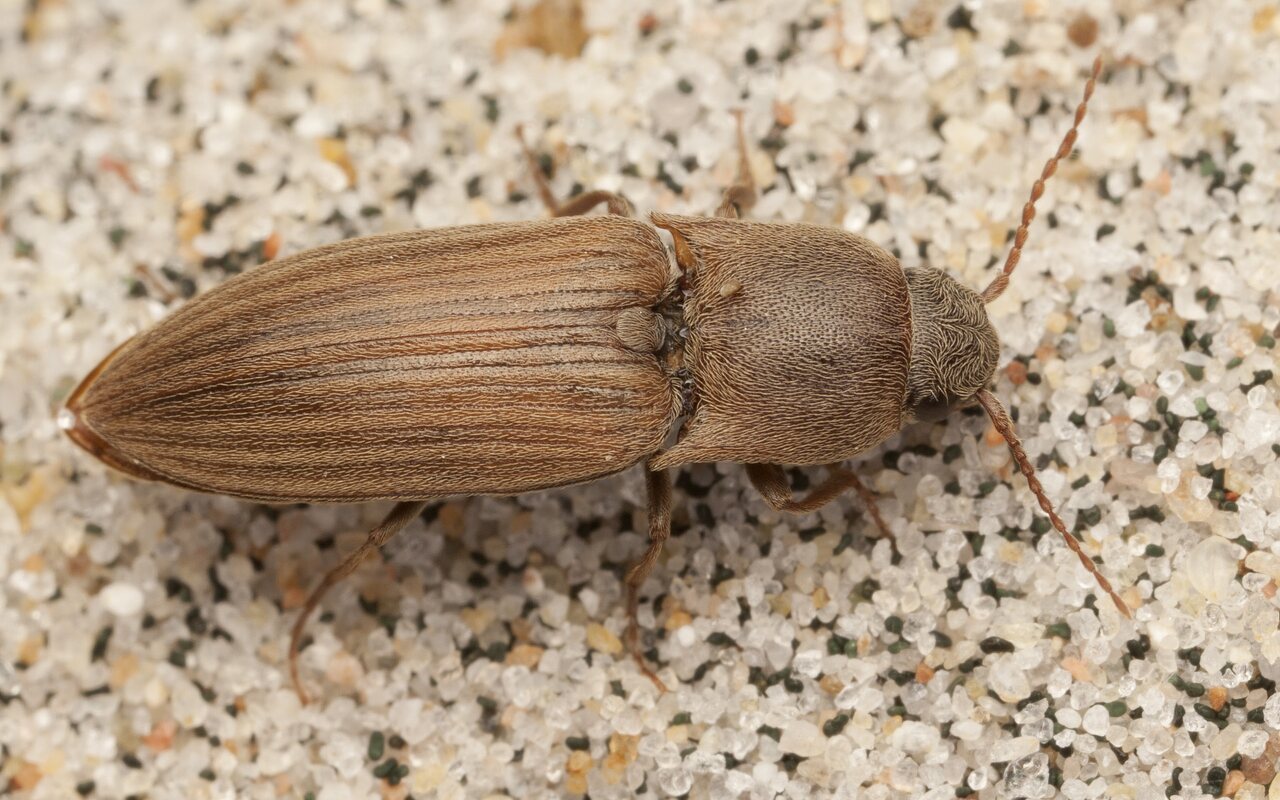
Agriotes lineatus · juostuotasis dirvaspragšis
- lined click beetle
- Saatschnellkäfer
- juostuotasis dirvaspragšis
- svītrainais sprakšķis
- osiewnik rolowiec
This generally common and often abundant species occurs throughout Europe, except for the far north, across to the far east of Russia, and has been introduced to New Zealand, Brazil and Canada among many other countries. The larvae are widely polyphagous and attack almost all crops, destroying seedlings and penetrating tubers etc.
The species is easily recognized by the alternately light and dark brown elytral interstices. Size 7-10mm. The entire body is various shades of brown, with pale appendages, the dorsal surface with short grey or yellow pubescence. The antennae are filiform; the second segment as long as the fourth. Head very dark, sometimes black, and broad compared with the anterior margin of the pronotum. The pronotum is elongate and broadest in front of the middle. The elytra have strongly punctured striae and finely cross strigose interstices. The claws simple, not serrate.
Vabalo kūnas pailgai ovalinis. 7–10 mm ilgio, nuo smėlio iki šviesiai rusvos spalvos. Gyvena pievose, laukuose, soduose ant skėtinių augalų, ėda augalų dalis. Dažniausiai sutinkamas gegužės – liepos mėnesiais. Lervos vystosi 2–3 metus. Jos gali nugraužti augalų šaknis ir šakniagumbius. Lėliuke virsta dirvoje, jauni vabalai žiemoja sutrūnijusioje medienoje.‥